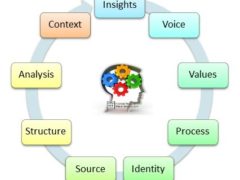Social media represents a unique approach to citizen engagement. Engagement on the platform often bypasses users’ filters as the polite and civilized personas of many (although not all) are cast aside with the hope of anonymity. Although this crude use of social media, referred to as trolling, by no means represents all users the phenomena offers companies, institutions, and the public sector a glimpse into what customers truly want.
 Case Example: Pipeline Expansion
Case Example: Pipeline Expansion
A recent dialogue on Facebook found an abundance of profanity, name calling, labeling, and criticisms from both sides of the aisle. Even simple academic references to numbers and articles (from both sides of the argument) were being marked as spam.
Advocacy for and against a pipeline in was being attacked from both sides of the aisle almost indiscriminately; even if a comment was aligned with previously shared viewpoints. Engagement on the discussion continue to fragment as sensitivity thresholds were reached.
Carl Jung often spoke of the Shadow side of humanity as representing characteristics and forces that are inadequately integrated into consciousness:
Whenever contents of the collective unconscious become activated, they have a disturbing effect on the conscious mind, and contusion ensues. If the activation is due to the collapse of the individual’s hopes and expectations, there is a danger that the collective unconscious may take the place of reality.
- Voice: Importance of having one’s voice heard. The voice provides an understanding of the hopes and dreams as well as the goals and priorities of the customer.
- Values: Importance of having ones values reflected in the solution. Values give an understanding of how product/ services are evaluated.
- Process: Importance of having one’s identity acknowledged in the process that drives the solution. The processes used decide how the business model & brand(s) is viewed.
- Identity: Importance of group identity. Identify influences customer, market, and industry segmentation and analysis. It also influences how, who, and why product/ service offerings are purchased or rejected.
- Source: Importance of where a value originated. Source not only provides more insight into identity it also adds insight into how information is access, retrieved, stored, evaluated, and used (distributed or shared).
- Structure: Importance of how a complex exchange of information is structured and facilitated. Structured determines the quality of access, engagement, boundaries, and when exclusion occurs.
- Analysis: Importance of original assumptions, biases, and preferences on how conflicting viewpoints is understood, filtered, and integrated into ongoing exchanges. Analysis also influences how a unique value proposition is evaluated.
- Context: Importance of context, background reports, analytics, and information when evaluating new data. Context also determines what is relevant or not relevant as well as influences the quality of voice and source.
Many important discussions (such as the post) begin with a list of questions but are not solved with more questions. The path of inquiry needs to be followed closely and the critical questions, when they surface, need to be thoughtfully answered. When the answers are provided the solutions entailed need to be further tested and evaluated for ‘fit’.
| Objective | Outcome | Customer Feedback | Goals |
| What | What | Is | How |
| are | are | the | can the |
| the | the | customer | current |
| companies | current | satisfied | offerings |
| goals? | results? | with | be |
| the solution? | improved? | ||
When a ‘solution to problem fit does not exist customers will remain dissatisfied. Social media often becomes a platform for the ‘disenfranchised’ to voice their complaints. This platform is often underappreciated and under-leveraged by affected companies.
The methods used to conduct customer information influences the quality and relevance of the products/ services being developed. When the methods are are too aggressive, or reach  conclusions prematurely, the customer will remain dissatisfied. The result will be valuable company assets and resources being misallocated and opportunities to delight the customer being missed. But this need not be a permanent mistake.
conclusions prematurely, the customer will remain dissatisfied. The result will be valuable company assets and resources being misallocated and opportunities to delight the customer being missed. But this need not be a permanent mistake.
The shadow side of social media is a often underutilized treasure trove of insights, information, and feedback for businesses. This information, when referenced frequently, can help businesses better align their processes, strategies, and offerings with solutions their customers actually care about.
A [individual] who is unconscious of himself acts in a blind, instinctive way and is in addition fooled by all the illusions that arise when he sees everything that he is not conscious of in himself coming to meet him from outside as projections upon his neighbour.
The process of innovation requires insight into customer problems in the pursuit of novel solutions. The business that has additional customer insights over that of a competitor will have an advantage when evaluating what strategies to pursue and what product/ service offerings have the most value. Traditional customer development methods often discover limited insights warranting a different approach towards engaging and understanding the customer’s needs.
Insight begins with what is already known and moving to the unknown.
How is your company leveraging social media insights? Share your comments below.
Travis Barker, MPA GCPM
Innovate Vancouver
Innovate Vancouver is a business development & consulting service and technology startup located in Vancouver, BC. Contact Innovate Vancouver to help with your new project. Innovate Vancouver also gives back to the community through business consulting services. Contact us for more details.




